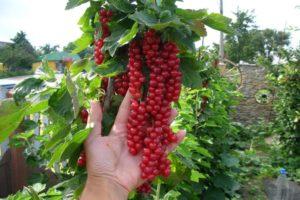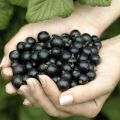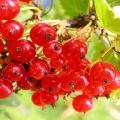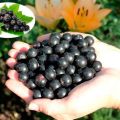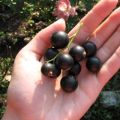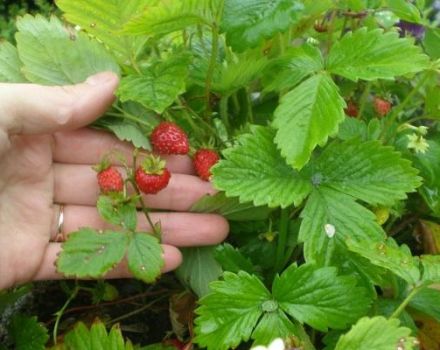Characteristics and description of the Titania currant variety, planting and care
A foreign currant with Russian roots - Titania - appeared about 50 years ago in Russian gardens. The berry is grown in all climatic regions of the country. The new berry perfectly tolerates frosty winters and dry summers. With good care, currants give high yields. You should also follow the growing requirements: choose the right site, provide fertile soil.
History of the origin of Titania's currant
Swedish breeders were involved in the creation of the Titania blackcurrant. But the genealogy of culture leads to Russia. Botanists used the local and Russian varieties Altayskaya Dessertnaya for crossing. The currant Titania was registered at home in 1970. 15 years later she appeared in Russian gardens. The varietal berry was distinguished by frost resistance, yield, disease resistance. With this she won the hearts of gardeners.
Pros and cons of culture
Positive properties of the Titania variety:
- The harvest is harvested in three stages, which makes it possible to enjoy the berry.
- Strong immunity.
- It tolerates frost and drought.
- The berries do not fall off during ripening.
- High productivity.
- Perfectly tolerates transportation over long distances.
- When propagated by cuttings, it quickly takes root.
Minuses:
- High requirements of agricultural technology.
- Improper care leads to crushing of the berries.
- We have to get rid of the overgrowth.
- Loves moist soil.
- The rainy summer affects the taste of the berries.
- The berries are of different sizes.
Negative characteristics do not interfere with growing Titania on an industrial scale, in the country.
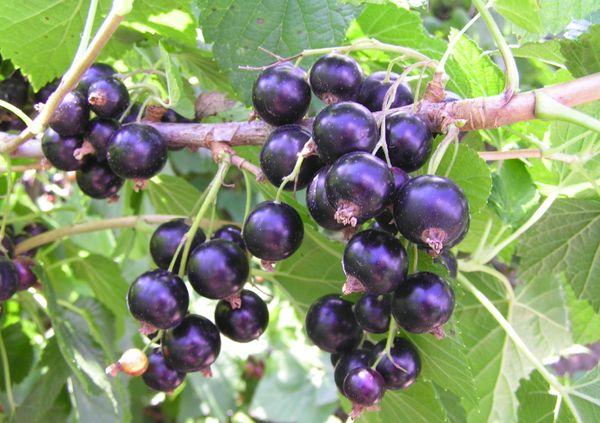
Description and characteristics of the variety
Titania grows with a tall, spreading shrub - 1.5 x 1.5 meters, dome-shaped. Shoots are straight. They differ from their counterparts in powerful growth. This feature allows you to form a bush during the growing season.
Berries of different sizes. 20-25 berries ripen on one brush. The shell is dense, shiny, black in color. The pulp is aromatic, sweet and sour with wine notes. Taste qualities - 4.6 points.
Suitable region and climate
Due to its resistance to drought and frost, Titania is grown in regions with different climatic conditions.
Resistant to freezing temperatures and drought
The bushes tolerate low temperatures down to -34 degrees.In northern regions with snowy winters, they can hibernate without shelter.
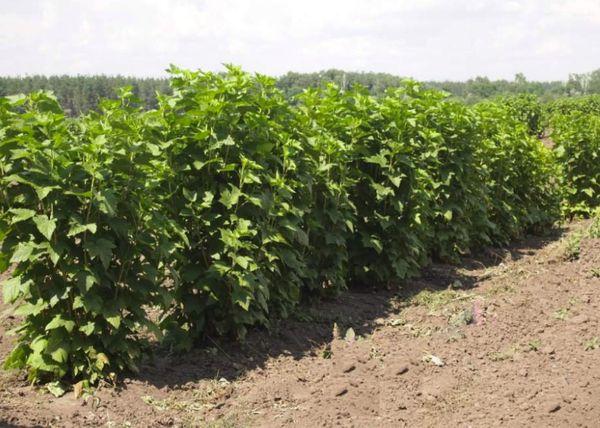
Titania currant withstands drought, but not for a long time. Therefore, it requires watering.
Susceptibility to diseases and pests
Currant with strong immunity. With proper care, the plant is not exposed to diseases: anthracnose, white, brown spot, powdery mildew.
In order to prevent pests in early spring, while the buds are sleeping, the bushes are spilled with boiling water. The procedure prevents the attack of the spider mite. To prevent boiling water from damaging the root system, wooden structures are laid. The currant is attacked by a glass butterfly, a shoot gall midge, a fruit sawer.
Monthly spraying with ash and water, a solution with laundry soap prevents diseases, pest attacks.
Productivity and fruiting
The berries ripen in several stages. The first collection is carried out in the first decade of July and lasts for three weeks. The size of the berries is different, the weight varies from 1.3-4 grams. The taste of the pulp is sweet and sour.
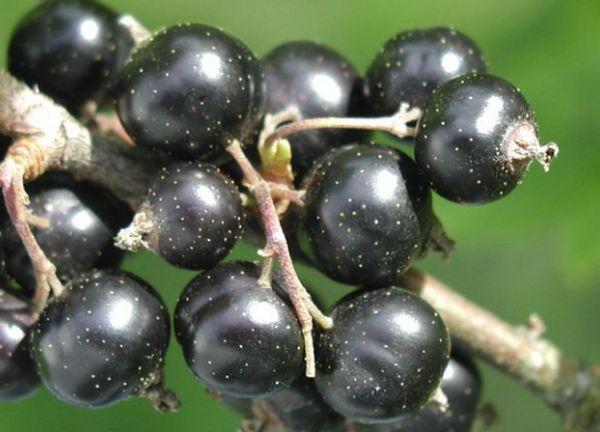
Self-fertile currants from one bush give 2-5 kilograms. On an industrial scale, 80 centners are harvested from one hectare.
Fruit applications
Titania berries are used for food in a fresh, processed form. Keeps currant vitamins frozen. Defrost the fruits gradually so that all properties are preserved. Put it on a refrigerator shelf, with a temperature of 4-5 degrees, until it is completely defrosted.
The fruits are used for making juices, jams, preserves. Used in the confectionery industry, cosmetology.
Currant planting technology
Titania will thank you with a high yield, a sweet berry with the right growing technology. It is necessary to choose the right planting site, fertile soil, plant a seedling according to the scheme. Provide proper care for the culture: watering, feeding, forming a bush.
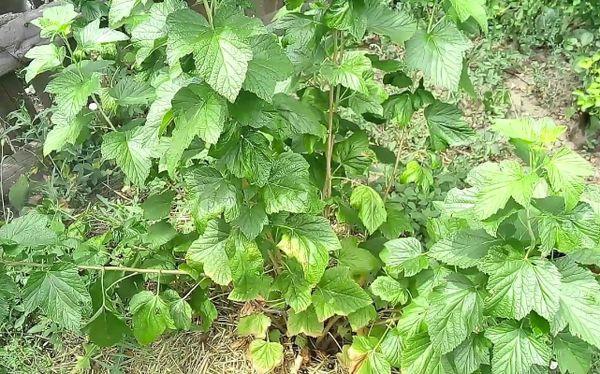
Optimal timing
The culture is planted in early spring, autumn. It all depends on the region. In areas with low temperatures, currants are planted in the last decade of March or early April. The landmark is dormant kidneys. When planting in autumn, the seedling must have time to take root before the onset of frost.
Choosing a suitable place
The site for the Titania variety is chosen light, not shaded. They are planted, for example, along the fence, on the south side. The surface must be flat. Groundwater is over 1 meter.
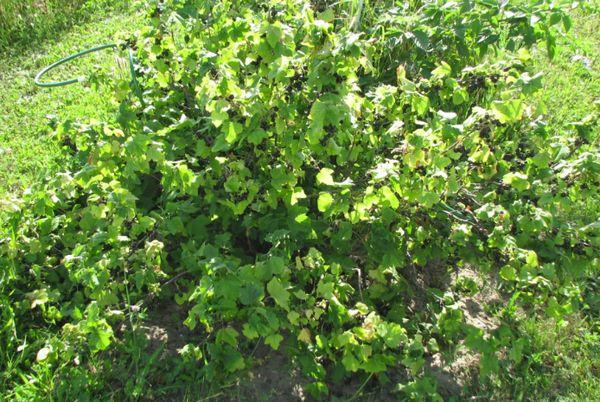
The soil is prepared fertile, permeable. The optimum reaction of the soil is neutral, slightly acidic. Sand is added to heavy soil, lime or dolomite flour is added to acidic soil.
Selection and preparation of planting material
The bushes of this variety are spreading, so the distance between them is kept at least 2 meters. When planting in several rows, they are planted in a checkerboard pattern. The step between the rows is 1.2 meters. The landing site is prepared three weeks before landing in the fall. At the same time, a place for spring planting is being prepared. Garbage, weeds are removed from the site, and the earth is dug up.
Pits are dug 40x40 centimeters, depth - 50. The poor bottom layer is removed. The bottom is covered with a nutrient layer: leaf compost, ash, superphosphate.
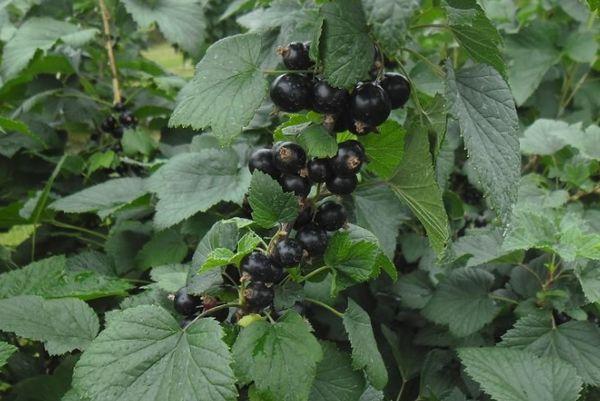
Disembarkation algorithm
After 3 weeks, the seat is ready for planting:
- In prepared holes 40x40x50, the seedling is installed at an angle for better rooting. The depth is adjusted according to the root system.
- Pre-fill with half a bucket of water.
- They are covered with fertile soil.
- The root collar is deepened 5-7 centimeters into the ground.
- The soil is tamped, watered with the rest of the water.
- When the liquid is absorbed into the ground, the surface around the bush is mulched.
- The branches of the bush are pruned in such a way that up to 6 developed buds remain on each shoot.
In the northern regions, planting is carried out in the spring according to the same scheme.
Care
In the process of growing currants, they provide proper care: watering, eliminating weeds, loosening, foliar and root feeding, forming a bush.
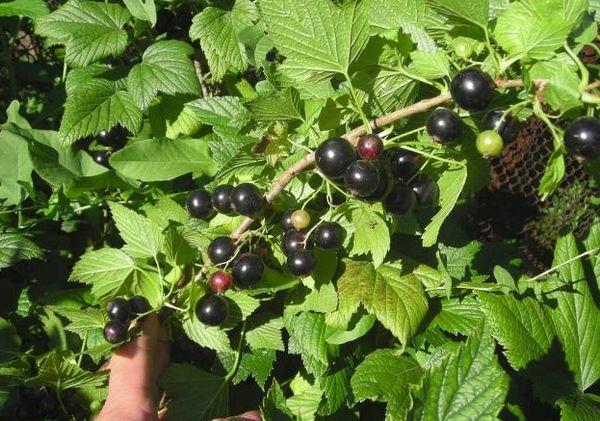
Regularity of watering
Titania prefers wet ground. If there is no precipitation, additional watering is carried out. A signal that the plant does not have enough water will be drooping leaves. The first irrigation is required at the time of ovaries. The second time the bushes are watered after harvest. The procedure is needed for normal wintering, future harvest. Each bush should receive 3 buckets of water.
Top dressing
Currant responds positively to organic matter: rotted manure, mullein solution or urea. The first feeding is carried out in early spring. Fertilizers are applied to the trunk circle.
In the summer, they are fed with infusions, for example, nettle. Chemical fertilizers are excluded for groundbait.
In the fall, after the formation of the bush, superphosphate is introduced - 4 tablespoons, potassium sulfate - 2 tablespoons, humus - 5 kilograms, per square meter. The culture does not refuse foliar dressings rich in macro- and microelements.
Bush formation
In early spring, in autumn, currant pruning is carried out. Variety Titania gives a lot of renewal shoots. Therefore, a bush can be formed in one year. After winter, the frozen, dried shoots are cut out. The rest - cut to 6 buds.

After a year, zero shoots will be skeletal branches. The bush should have 15-20 main branches. After 5 years, the old branches are being replaced with zero shoots.
Sanitary, renewal pruning of the bush is carried out annually.
Preparing for frost
Currants of this variety are not afraid of frost if there is snow in the region. At low temperatures, snowless winter, the shrub requires insulation. The trunk circle is covered with a layer of mulch. For this, humus, peat, sawdust are used. Organics keep warm well. Shoots are tied and pressed to the ground. They are covered with a material that allows air to pass through: boards, plywood, agrofiber. In plastic, the shoots will rot.
Breeding methods for currants
Titania is grown by layering. In the spring, they choose a strong shoot and pin it to the ground. In order for the branch to take root quickly, the integrity of the cover is violated. By autumn, the rooted branch is separated from the mother bush, transplanted to a permanent place.
The variety produces many shoots per season. Cuttings, 20 centimeters long, are cut in the spring, seated in the substrate. Roots appear by autumn. The cuttings are transplanted to a permanent place. Gardeners like to use the second option. A feature of the variety is the rapid survival of cuttings.
Reviews of experienced gardeners about the Titania variety
“I have been growing the Titania variety for over 10 years. I got a seedling at the initial stage. Over time, I started breeding. Now I have 5 bushes. Grown by cuttings. The bushes have taken root perfectly. Berries differ from other varieties in sour taste. I liked the fact that the bushes are resistant to diseases. I do not use chemicals. This is important for our family. I take off 2.5 kilograms from one bush. We use it fresh. Freeze in the refrigerator for the winter. In winter, the fragrant berry goes with a bang. "
Valentin, 60 years old, Pskov region.
“I grow the Titania variety in the garden. Currants do not require special care. In the spring I feed with organic matter, in the fall - with potassium sulfate. I am glad that you do not have to deal with diseases and pests. I like that it ripens in several stages. Children have time to enjoy the berry. "
Irina, 30 years old, Torzhok.
“I am growing the Titania variety in the country. Of the negative properties, I would like to note: the berries are sour, the size is not the same, overgrown with shoots. Pros: stable harvest - 2.5 kilograms per bush, perfectly tolerate our winters without shelter, do not get sick. "
Alexander, 45 years old, Moscow region.
